by Dan Quadros* (Advanced Biofuels USA) This article is the result of a technical trip to Germany and the UK to participate in strategic meetings and visit labs; to attend seminars, an expo, a short course and a symposium. Posted after the article are two interviews with important researchers in this area: Professor Hans Oechsner of the State Institute of Agricultural Engineering and Bioenergy and Dr. Michael Köttner from IBBK – Internacionales Biogas & Bioenergy Kompetenzzentrum.
To be more didactic, the article is in three parts:
- Part I: An overview of biogas in Europe, using available literature and Internet sources to describe the importance and possibilities of biogas plants on the old continent;
- Part II: Personal experiences, which describe the events in which I participated and my personal feelings about the theme; and
- Part III: Final thoughts.
Part I: Biogas in Europe
Biogas is a renewable energy source that is technically fully established, producing heat, steam, electricity and vehicle fuel. It is produced during anaerobic digestion (AD) of organic substrates, such as manure, sewage sludge, the organic fractions of household and industry waste, as well as of energy crops.
It is produced in large scale digesters found primarily in industrial countries for sewage sludge treatment and stabilization purposes, as well as in small scale digesters on individual farms. Biogas is also produced during anaerobic degradation in landfills and it is then referred to as landfill gas.
The interest in biogas has increased due to global efforts to displace fossil fuels used for energy production and due to the necessity of finding environmentally sustainable solutions for the treatment and recycling of animal manure and organic wastes. The digestate, the product obtained after the treatment of organic matter, is a source of nutrients and its application in agriculture has improved soil properties and crop yields.
In line with other biofuels, biogas from AD is an important part of the European transport and energy policy. As an affordable and CO2-neutral source of renewable energy, it offers the possibility of treating and recycling a wide range of agricultural residues and by-products in a sustainable and environmentally friendly way. At the same time, biogas brings along a number of socio-economic benefits for the economy, environment, society and security of energy supply.
Biogas is produced by bacteria through anaerobic digestion of organic substrates in the absence of oxygen. The chemical composition of raw biogas includes 50%-75% methane and 25%-50% carbon dioxide; with the rest composed of water vapour and traces of oxygen, nitrogen and hydrogen sulphide.
To allow injection of biogas into the natural gas grid or for use as a vehicle fuel, it must be upgraded. This means that carbon dioxide is removed so that the proportion of methane is increased to usually above 96% so that it meets the quality standards for natural gas.
Biogas is seen to be one of the key technologies both to reach EU member states' targets for renewable energies in 2020 and to meet their requirements within the European organic waste management directive.
Regulatory restrictions on waste management and the introduction of dedicated support schemes for renewable energies made the biogas sector a booming market in many European countries. Governments have set up incentive systems for paying for electricity (feed-in tariffs, green certificates, tenders). In a number of countries, the biogas market is stimulated by additional payments for the use of energy crops. They aim to promote the increase in renewable energy production, while the policy also enables farm holdings to reduce their energy dependency and diversify their incomes in the event of falling cereal, milk or meat prices. Other countries question the environmental soundness of using energy crops such as maize for methanization, preferring to convert already existing waste feedstock (European Biomass Association, AEBIOM and partners, 2012).
According to the European Biogas Association, there are more than 14,500 biogas plants in Europe and the number is still growing (Figure 1). Probably today the total energy generated is more than 8,000 MWe.
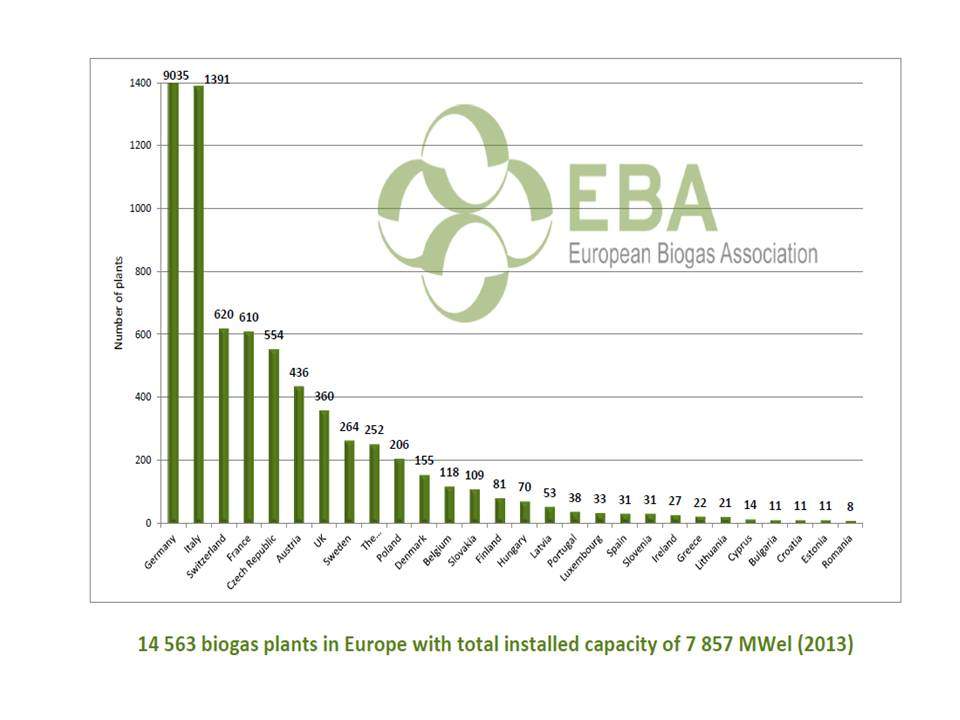 Figure 1 – Number of biogas plants according to country. Source: EBA, http://european-biogas.eu/2014/12/16/4331/
Figure 1 – Number of biogas plants according to country. Source: EBA, http://european-biogas.eu/2014/12/16/4331/
In recent years, central European countries like Hungary, the Czech Republic, Slovakia and Poland increased by 18% the number of biogas plants in the region. Countries, such as the UK, France and Sweden, continue to develop on a steady rate. The Czech Republic and Cyprus already ceased support for biogas plants, while German and Austrian biogas plant operators are facing local caps.
Policy changes have been mainly responsible for stimulating or suppressing biogas initiatives.
The main focus on biogas has been electricity (Figure 2) or electricity-heat conversion using big generators.
Biogas can provide both base load and peak load electricity, which makes it a valuable option to balance fluctuating renewable energy systems (RES) energies, like wind power and photovoltaic power.
Some countries are supporting the utilization of combined heat and power production (CHP) due the efficiency of conversion.
The possibilities include biomethane production. In this way, biomethane can be injected in the gas grid or be used as vehicular fuel. Biomethane industry followed the growing trend of biogas, reaching almost 300 plants with a total production over 1,3 billion m3 (Figure 3). With the increase of biomethane production, the continuing challenges are more investment in infrastructure and flex-fuel fleet to distribute and use the biomethane in the transportation system. The number of biomethane filling stations doubled in 2013 increasing the share of biomethane used in transport to 10% of the total biomethane produced in Europe.
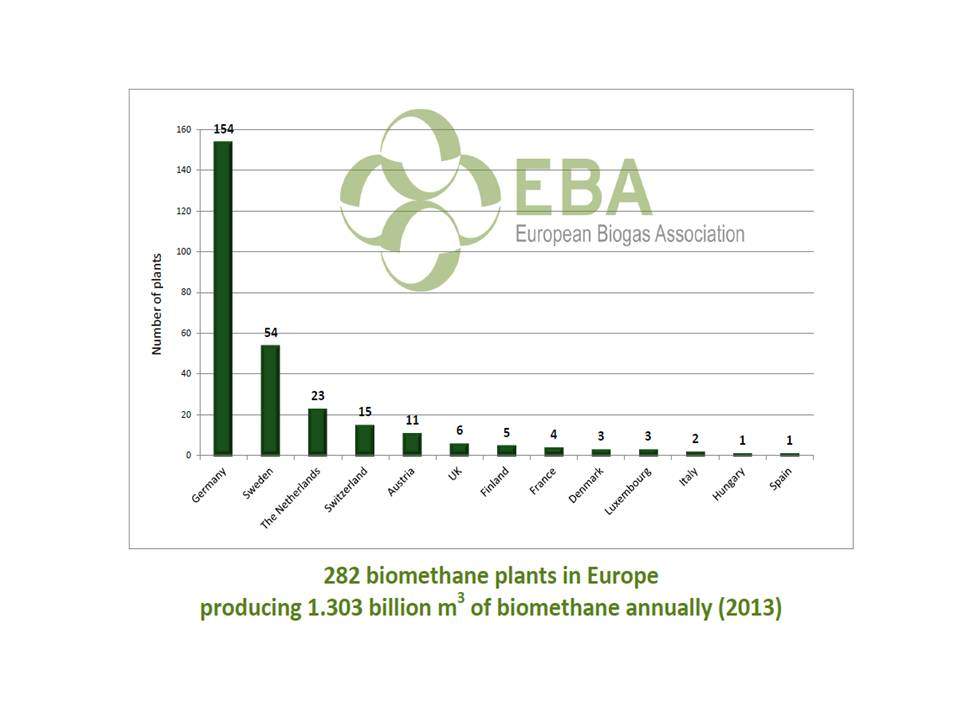 Figure 3. Number of biomethane plants according to the country. Source: EBA, http://european-biogas.eu/wp-content/uploads/2014/12/Biomethane-graph-20131.png
Figure 3. Number of biomethane plants according to the country. Source: EBA, http://european-biogas.eu/wp-content/uploads/2014/12/Biomethane-graph-20131.png
Developing use of biomethane for transport is the focus of several projects such as BIOMASTER, MADEGASCAR, GasHighWay, BioGas Max, Urban Biogas, Green Gas Grids and Baltic Biogas Bus, which aim to increase its use in the market.
Biomethane for transport was also one of the options supported by the European Green Cars Initiative (a €5 billion PPP boost to the European car industry).
The most concrete reference for 2020 estimates are national renewable action plans which contain ambitions for the different renewable energy sources to meet the 20% RES in energy supply.
Biogas production is not separately reported, but is estimated in relation to the end use. Biogas-related electricity is estimated to be 64TWh (5.5 Milion tonne oil equivalent, Mtoe) in 2020. The gross production of heating and cooling from biogas is estimated at 5.1 Mtoe in 2020. The share of biogas in transport is approximately 6TWh (0.5 Mtoe). The total estimate for final energy consumption sourced from biogas in 2020 is more than 11 Mtoe. Adjusting for conversion efficiencies, this corresponds with approximately 28 Mtoe of primary biogas production (Foreest, 2012).
Calculations made recently by AEBIOM, the European Biomass Association, show a biogas potential of around 460 TWh (1,700 PJ) by 2020 in the EU-27. For this production, agricultural products (for instance energy crops and manure) and waste (biodegradable waste and sewage sludge) are to be used as substrates. Recovery of landfill gas is also included in this projection. The potential production would be equivalent to a third of the natural gas production in Europe and to 10% of the consumption.
The feedstock used for biogas production can impact not only the gas production, but also the perception of society regarding the technology. Germany relies on energy crops, mainly corn silage, to produce biogas. Other countries, with less arable land and/or concerns about food vs. fuel issues, have restricted feedstock to manure or other residues.
Different types of waste from society are of great importance when studying biogas systems. By utilizing organic waste for biogas production it could be regarded as a resource instead of as a problem, but this change in perception takes time, and large amounts of organic residues are still being disposed of in other ways, such as composting or landfilling.
In the EU regulation known as Regulation (EC) No 1774/2002 or the ABP-regulation, the proper handling of animal by-products is described, and the residues are categorized. This, in order to prevent the spreading of animal diseases, such as BSE and foot and mouth disease. The regulation affects biogas production since residues such as slaughterhouse waste, which is an energy-rich substrate, in many cases needs pre-treatment according to the directives.
Biogas production per se is not mentioned in the reformed CAP (Common Agricultural Policy). However, a key element of the new CAP is a rural development strategy, in which renewable energy production from agricultural products is advocated. Included in the CAP is an obligation for the Member States to set up agri-environment schemes, and farmers are then granted support.
Biogas production at ecological farms is an interesting field which could have great potential as it may bring about positive synergy effects (Engdahl, 2010).
Part II: Personal experiences
Germany
Everything started at the University of Hohenheim in Stuttgart, an agricultural-focused University founded around 200 years ago. There I met Professor Hans Oechsner in his advanced biogas research lab at the State Institute of Agricultural Engineering and Bioenergy.
The Institute is responsible for new research, advising farmers and industry partners, and other outreach activities about biomass. In the past, it focused on oil crops for biodiesel and biomass for electricity generation, while currently the focus is on biogas.
Prof. Oechsner has many years of experience in biogas production from agricultural feedstocks. His research lines include growing and breeding energy crops to obtain better varieties, and studying harvest time and storage methods to maximize biogas production. Also, he has researched a way to run biogas plants without manure. Normally, manure provides bacteria, buffer capacity and trace elements. He identified which trace elements and how much of them are necessary for higher biogas production. You can listen to my interview with him at the end of this article.
Germany is the most advanced country in biogas. The German government aims to reach a share of renewable energy sources of around 20% in the final energy consumption, and of 35% in the electricity sector by 2020. In addition to the proposed targets and measures for biogas electricity, the German government also aims to feed 6 billion Nm3 biomethane into the natural gas grid in 2020 (European Biomass Association, AEBIOM and partners, 2012).
According to Prof. Oechsner, today around 12% of energy and 20% electricity is from renewable sources; thus in the next 5 years there is a need to increase these amounts to reach Germany's goals. In the past 10 years there was a great desire, stimulated by special policy and regulations like Renewable Energy Law that permits farmers to produce electricity from biogas and obligates the owners of the energy grid to buy it for exclusive prices. This enables farmers to invest in this sector.
He explained that as Germany is a small country compared to America, they have to intensify production to get the most out of it. In this way, energy crops like corn have greater potential as a biogas feedstock than manure. Manure is used as single feedstock in small plants or mixed with wastes or energy crops in bigger plants. The average biogas plant in Germany has a size of 2,500 m3 and produces 450 KW. It can provide electricity for 500 to 700 houses. Each hectare of corn in the form of silage, which is used to feed the digester day by day, produces biogas enough to be converted in 3 KW. Today, around 10% of arable land is used to grow energy crops for biogas plants.
Germany is one of the strongest economies in Europe. In this context, buying electricity with more expensive fares, when compared with other sources, to reach the goals, has been seen as positive. With the feed-in law in Germany, the government introduced an excellent support scheme with fixed feed-in tariffs for different feedstocks and capacities, long-term payment periods and guaranteed grid access and regulated grid connection rules (European Biomass Association, AEBIOM and partners, 2012).
Prof. Oechsner highlighted the possibility of flexible production and storage of biogas. Unlike other sources of energy, biogas can be stored for use when the demand for electricity is greatest; at peak demand or in certain times of the year when demand is greater. However, he mentioned that successful biogas systems are also possible due to the policy that guarantees high prices to the producers. Inevitably, this higher cost has been passed to the consumers. Thus, today the numbers of biogas plants stopped increasing and emphasis changed to investment in efficiency. The solution, according to Prof. Oechsner, will be to unify all the renewable possibilities in an energetic mix. An example of this is the injection of hydrogen from photovoltaic into biogas systems, which is object of his research, along with injecting biomethane into the grid.
United Kingdom
UK AD & Biogas
From Germany, I went to Birmingham for UK AD & Biogas 2015, a two day event full of seminars and a big expo.
In this big expo, specific to biogas, there were new technologies for biogas production and conversion. Biogas industry and academia showed cutting-edge research applicable to commercial scale.
Among many systems for biogas production, automated all-controlled systems give the perfect conditions for bacterial fermentation to occur. Once biogas is made, it should be filtered to remove harmful substances that could damage engines.
After that, big engines convert methane into electricity.
Highlights of the expo were the many companies demonstrating different models of engines.
Once purified, biomethane can be used in fleets of cars and buses as were shown there.
As a researcher, I found interesting the lab digesters, which can simulate internal conditions of a commercial digester to test many substrates and treatments and the machines which process normal trash from supermarkets and separate the fermentable fraction from the recyclable part such as plastic and foil.
Using the organic fraction of urban wastes is a great approach for the biogas industry, solving two issues at the same time.
During the seminars, we were informed about the current situation of biogas production in the UK. New policies can stimulate this industry and regulation should be debated and modernized, mainly about digestate utilization. There are some concerns that because digestate comes from manure and urban waste its utilization on edible crops could cause health problems. More studies are necessary to modernize old thoughts.
One innovation was a space specific for personal consultation, putting together customers and consultants to discuss planning, technical points, and feasibility.
Biogas Operator & Planner Course and University of Dundee, plus Visiting Labs
After that, I participated in a Biogas Operator & Planner course at Abertay University, Dundee, Scotland. The successful course was organized by the Renewable Energy Association (REA) and the International Biogas and Bioenergy Center of Competence (IBBK Fachgruppe Biogas). The participants were not just from UK, but from many places, such as Austria, Africa, Italy and elsewhere.
Despite staying just one day, I could participate in deep discussions with specialists and trainee professionals for biogas plants establishment and management.
While there, I visited the biogas lab of the university, where interestingly seaweed has been studied as a new substrate for biogas.
International Symposium on Energy Challenges and Mechanics
Finally, I went to Aberdeen, Scotland in order to participate in the 3rd International Symposium on Energy Challenges and Mechanics (ECM3) - towards a big picture. The symposium included the presence of delegates from 52 countries, mainly from UK, Germany, USA and Asia. It was not specificly about biogas as were the others, but biogas was included in some presentations.
My presentation was about small scale digesters for cooking and electricity generation in poor communities in developing countries.
Part III: Final considerations
Policies challenges
As is the case for most renewable energy sources, biogas production is still dependent on subsidies to attract investors and establish a substantial scale. On the EU level, there is no specific policy on biogas, but it is addressed in multiple policy documents and Directives that are related to renewable energies and bioenergy.
Biogas is included in three EU regulatory frameworks: the Renewable Energy Directive (2009/28/EC), the Directive on Waste Recycling and Recovery (2008/98/EC) and the Directive on Landfill (1999/31/EC).
The incentives schemes are subject to changes due to changing political climates or progressive modification by policy makers. Support programs have been closed or changed following, for example, a change of government or imposition of stricter application criteria. This creates a certain regulatory risk for investors and uncertainty with respect to the feasibility of renewable energy targets (Foreest, 2012).
The biogas industry is facing tremendous policy changes. The dramatic change which started with the German Renewable Energy Act EEG 2012 continues to hamper the industry. On the other hand, the biogas industry is increasing in the other parts of Europe – UK, Italy and Denmark, and we hope that the rest of Europe will follow these positive developments.
The Renewable Energy Directive 2009/28/EC is a sustainability scheme for energy uses of biomass and biogas other than biofuels, and to provide analysis on biofuel sustainability with respect to indirect land use change (iLUC). The iLUC corresponds to the carbon stock release from the conversion of natural land such as rainforest or grassland into cropland that is alleged to result from an increased production of biofuels/bioenergy in Europe.
For the transport sector, the current sustainability criteria aim at ensuring minimum greenhouse gas (GHG) savings when compared to fossil fuels as well as defining land criteria, e.g. avoid high biodiversity areas for raw material production.
The Waste Framework Directive 2008/98/EC sets criteria under which certain specified waste shall cease to be waste. This mechanism was introduced to further encourage recycling in the EU by creating legal certainty and a level playing field as well as removing unnecessary administrative burdens. There are proposals for the end of waste criteria.
Digestate is an excellent organic fertilizer which contains nearly all the nutrients that were in the feedstock used in the process. The EU wants to become sustainable and independent from foreign raw materials. Today, in some countries, there are a lack of regulation and safety concerns as well as misunderstanding about digestate advantages for agriculture.
This subject is very interesting, isn’t it? Are you thirsty for more information about it? You can hear more details from the experts in the interviews below.
Also, for additional information here is a list of useful links available which I have thanks to the European Biogas Association (EBA) website (http://european-biogas.eu):
Biogas
- Brochure of European Biogas Association (EBA): Biogas – simply the best (English)
- Brochure of German Biogas Association: Biogas can do it (English)
- Brochure of Club Biogaz: Anaerobic digestion and biogas pathway for future (French)
- Brochure of Edora and Valbiom: To understand anaerobic digestion FAQ (French)
- Biogas Handbook by Lemvig Biogas
- IEA Brochure: Biomass for Power Generation and CHP(English)
- BiogasIN Brochure: Did you know that Biogas…?(English)
- Publications of IEA Task 37 on anaerobic digestion, crops, digestate, biogas up-grading and biomethane injection : IEA Publications(English)
- Permitting and Financing procedures (Central and Eastern Europe): Publications of project BiogasIN(English, Bulgarian, Croatian, Czech, Greek, Latvian, Romanian, Slovenian)
- Background information on biogas: Kompost&Biogas (German)
- Arguments and facts on biogas production: Biogas can do it (English, German)
- The biogas handbook: Science, production and applications (English)
Biomethane
- Fact Sheet on Biomethane by EBA : Biomethane fact sheet(English)
- Proposal for a European Biomethane Roadmap elaborated in frames of GreenGasGrids project (English)
- Biomethane brochure of the Fachagentur Nachwachsende Rohstoffe e.V. (FNR): Biomethan(German)
- Biomethane injection into the gas grid: Publications of project GreenGasGrids(English, German)
- Biomethane injection into the gas grid: Biogas Netzeinspeisung (German)
- IEA biomethane study: Status and Factors Affecting Market Development and Trade (English)
Digestate
- EBA Digestate Factsheet: The value of organic fertilisers for Europe’s economy, society and environment
Statistics
- Biogas Barometer 2013 by EurObserv’ER
- Renewables Global Status Report 2014 by REN21
Maps of biogas plants
Map of biomethane plants
References
Engdahl, K. Biogas policies, incentives and barriers - a survey of the strategies of three European countries. Master thesis. Department of Technology and Society Environmental and Energy Systems Studies. Lund University , SWEDEN. 2010. 60p. http://www.miljo.lth.se/svenska/internt/publikationer_internt/pdf-filer/exjobb%20imes%20Kristina%20Engdahl.pdf
European Biogas Association website http://european-biogas.eu
European Biomass Association, AEBIOM and partners. EU Handbook - Biogas Markets. 2012. http://www.crossborderbioenergy.eu/fileadmin/crossborder/Biogas_MarketHandbook.pdf
European Biofuels Technology Platform http://www.biofuelstp.eu/biogas.html
Foreest, F. Perspectives for Biogas in Europe. Oxford Institute for Energy Studies. 53p. 2012. http://www.oxfordenergy.org/wpcms/wp-content/uploads/2012/12/NG-70.pdf
Ramanauskaite, R. European Biogas Association. In: BiogasIN Project, High Level Conference Athens,Greece, 2011. http://www.biogasin.org/files/pdf/HLC_athens/03_R.Ramanauskaite_PresentationBiogasIN.pdf
Danilo G. de Quadros; André de P. M. Oliver; Ueliton Regis; Renata Valladares and Edivaldo de J. Ferreira; Technical and economic analysis of plug-flow anaerobic digester to take advantage of goat manure in smallholder farms http://nscj.co.uk/ecm3/sessions/156_DaniloGdeQuadros.pdf
Interviews
To learn much more about biogas, listen to this exclusive Dan Quadros' interview with Dr. Hans Oechsner of Universität Hohenheim, discussing the history of anaerobic digestion in Germany and the future of biogas in the world.
1 – Could you summarize the main research lines of your lab?
2 – Could you tell us the history of anaerobic digestion in Germany?
3 – Why is Germany a leader on biogas production and utilization?
4 – What will be the future of biogas in the World?
Take the opportunity to understand the current situation of biogas in Europe with Dr. Michael Köttner, interviewed by Dan Quadros. Dr. Köttner is from IBBK – Internacionales Biogas & Bioenergy Kompetenzzentrum (http://ibbk.fachgruppe-biogas.de/index.php?id=1&L=1&id=151).
1 – What is the situation of biogas production in European countries nowadays?
2 – What is the importance of policies on biogas utilization?
3 – What is the potential of biomethane use in fleets?
*Former research scholar at University of Florida, Professor at Bahia State University, Brazil and Volunteer correspondent for Advanced Biofuels USA
Photos by or courtesy of Dan Quadros
Nearly 55,000 articles in our online library!
Use the categories and tags listed below to access the nearly 50,000 articles indexed on this website.
Advanced Biofuels USA Policy Statements and Handouts!
- For Kids: Carbon Cycle Puzzle Page
- Why Ethanol? Why E85?
- Just A Minute 3-5 Minute Educational Videos
- 30/30 Online Presentations
- “Disappearing” Carbon Tax for Non-Renewable Fuels
- What’s the Difference between Biodiesel and Renewable (Green) Diesel? 2020 revision
- How to De-Fossilize Your Fleet: Suggestions for Fleet Managers Working on Sustainability Programs
- New Engine Technologies Could Produce Similar Mileage for All Ethanol Fuel Mixtures
- Action Plan for a Sustainable Advanced Biofuel Economy
- The Interaction of the Clean Air Act, California’s CAA Waiver, Corporate Average Fuel Economy Standards, Renewable Fuel Standards and California’s Low Carbon Fuel Standard
- Latest Data on Fuel Mileage and GHG Benefits of E30
- What Can I Do?
Donate
DonateARCHIVES
- December 2025
- November 2025
- October 2025
- September 2025
- August 2025
- July 2025
- June 2025
- May 2025
- April 2025
- March 2025
- February 2025
- January 2025
- December 2024
- November 2024
- October 2024
- September 2024
- August 2024
- July 2024
- June 2024
- May 2024
- April 2024
- March 2024
- February 2024
- January 2024
- December 2023
- November 2023
- October 2023
- September 2023
- August 2023
- July 2023
- June 2023
- May 2023
- April 2023
- March 2023
- February 2023
- January 2023
- December 2022
- November 2022
- October 2022
- September 2022
- August 2022
- July 2022
- June 2022
- May 2022
- April 2022
- March 2022
- February 2022
- January 2022
- December 2021
- November 2021
- October 2021
- September 2021
- August 2021
- July 2021
- June 2021
- May 2021
- April 2021
- March 2021
- February 2021
- January 2021
- December 2020
- November 2020
- October 2020
- September 2020
- August 2020
- July 2020
- June 2020
- May 2020
- April 2020
- March 2020
- February 2020
- January 2020
- December 2019
- November 2019
- October 2019
- September 2019
- August 2019
- July 2019
- June 2019
- May 2019
- April 2019
- March 2019
- February 2019
- January 2019
- December 2018
- November 2018
- October 2018
- September 2018
- August 2018
- July 2018
- June 2018
- May 2018
- April 2018
- March 2018
- February 2018
- January 2018
- December 2017
- November 2017
- October 2017
- September 2017
- August 2017
- July 2017
- June 2017
- May 2017
- April 2017
- March 2017
- February 2017
- January 2017
- December 2016
- November 2016
- October 2016
- September 2016
- August 2016
- July 2016
- June 2016
- May 2016
- April 2016
- March 2016
- February 2016
- January 2016
- December 2015
- November 2015
- October 2015
- September 2015
- August 2015
- July 2015
- June 2015
- May 2015
- April 2015
- March 2015
- February 2015
- January 2015
- December 2014
- November 2014
- October 2014
- September 2014
- August 2014
- July 2014
- June 2014
- May 2014
- April 2014
- March 2014
- February 2014
- January 2014
- December 2013
- November 2013
- October 2013
- September 2013
- August 2013
- July 2013
- June 2013
- May 2013
- April 2013
- March 2013
- February 2013
- January 2013
- December 2012
- November 2012
- October 2012
- September 2012
- August 2012
- July 2012
- June 2012
- May 2012
- April 2012
- March 2012
- February 2012
- January 2012
- December 2011
- November 2011
- October 2011
- September 2011
- August 2011
- July 2011
- June 2011
- May 2011
- April 2011
- March 2011
- February 2011
- January 2011
- December 2010
- November 2010
- October 2010
- September 2010
- August 2010
- July 2010
- June 2010
- May 2010
- April 2010
- March 2010
- February 2010
- January 2010
- December 2009
- November 2009
- October 2009
- September 2009
- August 2009
- July 2009
- June 2009
- May 2009
- April 2009
- March 2009
- February 2009
- January 2009
- December 2008
- November 2008
- October 2008
- September 2008
- August 2008
- July 2008
- June 2008
- May 2008
- April 2008
- March 2008
- February 2008
- January 2008
- December 2007
- November 2007
- October 2007
- September 2007
- August 2007
- June 2007
- February 2007
- January 2007
- October 2006
- April 2006
- January 2006
- April 2005
- December 2004
- November 2004
- December 1987
CATEGORIES
- About Us
- Advanced Biofuels Call to Action
- Aviation Fuel/Sustainable Aviation Fuel (SAF)
- BioChemicals/Renewable Chemicals
- BioRefineries/Renewable Fuel Production
- Business News/Analysis
- Cooking Fuel
- Education
- 30/30 Online Presentations
- Competitions, Contests
- Earth Day 2021
- Earth Day 2022
- Earth Day 2023
- Earth Day 2024
- Earth Day 2025
- Executive Training
- Featured Study Programs
- Instagram TikTok Short Videos
- Internships
- Just a Minute
- K-12 Activities
- Mechanics training
- Online Courses
- Podcasts
- Scholarships/Fellowships
- Teacher Resources
- Technical Training
- Technician Training
- University/College Programs
- Events
- Coming Events
- Completed Events
- More Coming Events
- Requests for Speakers, Presentations, Posters
- Requests for Speakers, Presentations, Posters Completed
- Webinars/Online
- Webinars/Online Completed; often available on-demand
- Federal Agency/Executive Branch
- Agency for International Development (USAID)
- Agriculture (USDA)
- Commerce Department
- Commodity Futures Trading Commission
- Congressional Budget Office
- Defense (DOD)
- Air Force
- Army
- DARPA (Defense Advance Research Projects Agency)
- Defense Logistics Agency
- Marines
- Navy
- Education Department
- Energy (DOE)
- Environmental Protection Agency
- Federal Energy Regulatory Commission (FERC)
- Federal Reserve System
- Federal Trade Commission
- Food and Drug Administration
- General Services Administration
- Government Accountability Office (GAO)
- Health and Human Services (HHS)
- Homeland Security
- Housing and Urban Development (HUD)
- Interior Department
- International Trade Commission
- Joint Office of Energy and Transportation
- Justice (DOJ)
- Labor Department
- National Academies of Sciences Engineering Medicine
- National Aeronautics and Space Administration
- National Oceanic and Atmospheric Administration
- National Research Council
- National Science Foundation
- National Transportation Safety Board (NTSB)
- Occupational Safety and Health Administration
- Overseas Private Investment Corporation
- Patent and Trademark Office
- Securities and Exchange Commission
- State Department
- Surface Transportation Board
- Transportation (DOT)
- Federal Aviation Administration
- National Highway Traffic Safety Administration (NHTSA)
- Pipeline and Hazardous Materials Safety Admin (PHMSA)
- Treasury Department
- U.S. Trade Representative (USTR)
- White House
- Federal Legislation
- Federal Litigation
- Federal Regulation
- Feedstocks
- Agriculture/Food Processing Residues nonfield crop
- Alcohol/Ethanol/Isobutanol
- Algae/Other Aquatic Organisms/Seaweed
- Atmosphere
- Carbon Dioxide (CO2)
- Field/Orchard/Plantation Crops/Residues
- Forestry/Wood/Residues/Waste
- hydrogen
- Manure
- Methane/Biogas
- methanol/bio-/renewable methanol
- Not Agriculture
- RFNBO (Renewable Fuels of Non-Biological Origin)
- Seawater
- Sugars
- water
- Funding/Financing/Investing
- grants
- Green Jobs
- Green Racing
- Health Concerns/Benefits
- Heating Oil/Fuel
- History of Advanced Biofuels
- Infrastructure
- Aggregation
- Biofuels Engine Design
- Biorefinery/Fuel Production Infrastructure
- Carbon Capture/Storage/Use
- certification
- Deliver Dispense
- Farming/Growing
- Precursors/Biointermediates
- Preprocessing
- Pretreatment
- Terminals Transport Pipelines
- International
- Abu Dhabi
- Afghanistan
- Africa
- Albania
- Algeria
- Angola
- Antarctica
- Arctic
- Argentina
- Armenia
- Aruba
- Asia
- Asia Pacific
- Australia
- Austria
- Azerbaijan
- Bahamas
- Bahrain
- Bangladesh
- Barbados
- Belarus
- Belgium
- Belize
- Benin
- Bermuda
- Bhutan
- Bolivia
- Bosnia and Herzegovina
- Botswana
- Brazil
- Brunei
- Bulgaria
- Burkina Faso
- Burundi
- Cambodia
- Cameroon
- Canada
- Caribbean
- Central African Republic
- Central America
- Chad
- Chile
- China
- Colombia
- Congo
- Congo, Democratic Republic of
- Costa Rica
- Croatia
- Cuba
- Cyprus
- Czech Republic
- Denmark
- Dominican Republic
- Dubai
- Ecuador
- Egypt
- El Salvador
- Equatorial Guinea
- Estonia
- Eswatini/Swaziland
- Ethiopia
- European Union (EU)
- Fiji
- Finland
- France
- French Guiana
- Gabon
- Georgia
- Germany
- Ghana
- Global South
- Greece
- Greenland
- Grenada
- Guatemala
- Guinea
- Guyana
- Haiti
- Honduras
- Hong Kong
- Hungary
- Iceland
- India
- Indonesia
- Iran
- Iraq
- Ireland
- Israel
- Italy
- Ivory Coast
- Jamaica
- Japan
- Jersey
- Jordan
- Kazakhstan
- Kenya
- Korea
- Kosovo
- Kuwait
- Laos
- Latin America
- Latvia
- Lebanon
- Liberia
- Lithuania
- Luxembourg
- Macedonia
- Madagascar
- Malawi
- Malaysia
- Maldives
- Mali
- Malta
- Marshall Islands
- Mauritania
- Mauritius
- Mexico
- Middle East
- Moldova
- Monaco
- Mongolia
- Morocco
- Mozambique
- Myanmar/Burma
- Namibia
- Nepal
- Netherlands
- New Guinea
- New Zealand
- Nicaragua
- Niger
- Nigeria
- North Africa
- North America
- North Korea
- Northern Ireland
- Norway
- Oman
- Pakistan
- Panama
- Papua New Guinea
- Paraguay
- Peru
- Philippines
- Poland
- Portugal
- Qatar
- Republic of
- Romania
- Russia
- Rwanda
- Saudi Arabia
- Scotland
- Senegal
- Serbia
- Sierra Leone
- Singapore
- Slovakia/Slovak Republic
- Slovenia
- Solomon Islands
- South Africa
- South America
- South Korea
- South Sudan
- Southeast Asia
- Spain
- Sri Lanka
- Sudan
- Suriname
- Sweden
- Switzerland
- Taiwan
- Tanzania
- Thailand
- Timor-Leste
- Togo
- Trinidad and Tobago
- Tunisia
- Turkey
- Uganda
- UK (United Kingdom)
- Ukraine
- United Arab Emirates UAE
- Uruguay
- Uzbekistan
- Vatican
- Venezuela
- Vietnam
- Wales
- Zambia
- Zanzibar
- Zimbabwe
- Marine/Boat Bio and Renewable Fuel/MGO/MDO/SMF
- Marketing/Market Forces and Sales
- Opinions
- Organizations
- Original Writing, Opinions Advanced Biofuels USA
- Policy
- Presentations
- Biofuels Digest Conferences
- DOE Conferences
- Bioeconomy 2017
- Bioenergy2015
- Biomass2008
- Biomass2009
- Biomass2010
- Biomass2011
- Biomass2012
- Biomass2013
- Biomass2014
- DOE Project Peer Review
- Other Conferences/Events
- R & D Focus
- Carbon Capture/Storage/Use
- Co-Products
- Feedstock
- Logistics
- Performance
- Process
- Vehicle/Engine/Motor/Aircraft/Boiler/Ship
- Yeast
- Railroad/Train/Locomotive Fuel
- Resources
- Books Web Sites etc
- Business
- Definition of Advanced Biofuels
- Find Stuff
- Government Resources
- Scientific Resources
- Technical Resources
- Tools/Decision-Making
- Rocket/Missile Fuel
- Sponsors
- States
- Alabama
- Alaska
- Arizona
- Arkansas
- California
- Colorado
- Connecticut
- Delaware
- Florida
- Georgia
- Hawai'i
- Idaho
- Illinois
- Indiana
- Iowa
- Kansas
- Kentucky
- Louisiana
- Maine
- Maryland
- Massachusetts
- Michigan
- Midwest
- Minnesota
- Mississippi
- Missouri
- Montana
- Native American tribal nation lands
- Nebraska
- Nevada
- New Hampshire
- New Jersey
- New Mexico
- New York
- North Carolina
- North Dakota
- Ohio
- Oklahoma
- Oregon
- Pennsylvania
- Puerto Rico
- Rhode Island
- South Carolina
- South Dakota
- Tennessee
- Texas
- Utah
- Vermont
- Virginia
- Washington
- Washington DC
- West Coast
- West Virginia
- Wisconsin
- Wyoming
- Sustainability
- Uncategorized
- What You Can Do
tags
© 2008-2023 Copyright Advanced BioFuels USA. All Rights reserved.

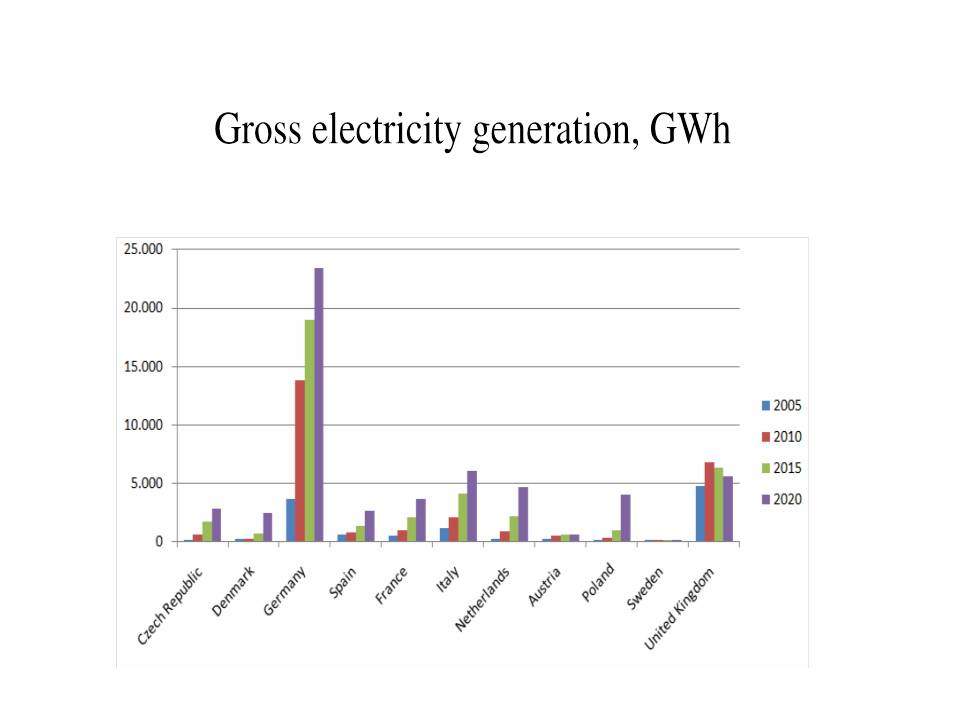
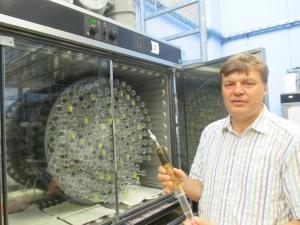



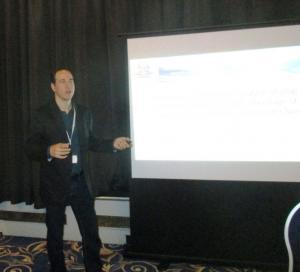
.jpg)





0 COMMENTS
Leave A Comment
Your Email Address wiil not be Published. Required Field Are marked*